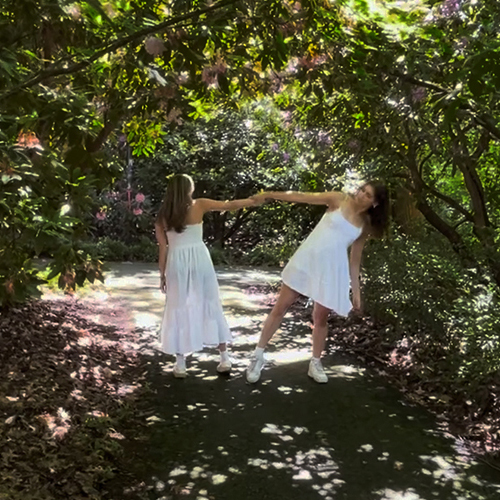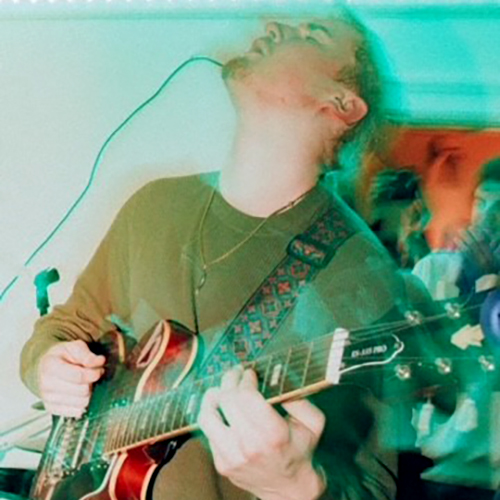Dance and dissent may seem worlds apart, but when they intersect the results can be powerful, as audiences will discover at the Chamber Dance Company (CDC) concert, October 22- 25. The concert is part of a larger project, spearheaded by Dance Program Director Betsy Cooper, that explores the role of the arts in dissent and social change.
“As an ephemeral art form, people tend to let dance wash over them like a sunset, and don’t necessarily expect more of it than to be poetic,” says Cooper. “But dance is a medium that is as potent for social commentary as the spoken and written word.”
Cooper has been studying the intersection of dance and politics for more than a decade, with a particular interest in the burgeoning modern dance movement of the 1930s. As the modern dance pioneers were forging new techniques and modes of expression, a subset of their dance students became intrigued by the idea that dance could be used to change the world. They formed a dance collective, the New Dance Group, dedicated to creating works driven by the important social issues of the day, such as homelessness, workers’ rights, and race relations.

“The New Dance Group wanted to make dance accessible, so the guy down the street, with no dance background, could understand what they were trying to say,” says Cooper. “They viewed dance as a political statement.”
Cooper will discuss the New Dance Group as part of this fall’s Wednesday University series, a five-week program of lectures presented by the Simpson Center for the Humanities and Seattle Arts and Lectures. The series, “Art, Dissent, and Social Change,” will also include speakers from the School of Art, School of Drama, and Cinema Studies, all focusing on the creative processes and projects of American artists whose work challenged the status quo. (Click here for details.)
On the heels of Cooper’s lecture comes the CDC concert, performed by Dance Program graduate students and advanced undergraduates. The concert will include dances created by the New Dance Group from the 1930s through the 1950s, along with more recent works with an element of social commentary.
Dances dating back more than 70 years often need to be reconstructed using notation or film footage, but it’s far more effective to have a dancer who performed the work pass it on to the next generation. To that end, the Dance Program secured a UW Arts and Sciences Exchange Grant to bring Deborah Carr to campus this summer to teach students “Lynchtown,” a 1936 dance by Charles Weidman. Carr had reconstructed and performed the dance in the 1990s, after learning it directly from Weidman. It will be the opening work in the CDC concert.
“Dances are passed on through our bodies,” says Cooper. “For this concert, we have two dances for which we’re just one generation removed from the original choreographer. We feel very fortunate to have that connection.”
While Carr was working with experienced UW dancers on “Lynchtown” this summer, Cooper was supervising Dance 101, an introductory course that combines lecture and studio work. She decided to tweak the introductory course to take advantage of Carr’s visit and the Wednesday University series.

“My thought was, ‘How can we connect the other projects with these students who are new to dance?’” recalls Cooper. She chose to feature the modern dance movement in the 1930s—including the New Dance Group—in the course lectures, with students required to observe at least one CDC rehearsal as dancers learned the New Dance Group pieces.
Cooper then assigned a final project for Dance 101 students to demonstrate the power of dance as social commentary. “Working in groups, students were asked to come up with a social issue they feel passionate about, write a statement about the issue, and make a dance about it,” says Cooper. “They did what the New Dance Group did—they started improvising on a social issue and worked collaboratively to create a piece.”
Students tackled everything from the environment to oppression, abortion to domestic abuse. The results? “Some of them were incredibly powerful,” says Cooper. “Students saw that dance has the potential to speak to social and political issues the way any other piece of art does.”
With the success of the class, Cooper is thrilled to now highlight this aspect of dance through the CDC concert and the Wednesday University program. “It’s a message I’m eager to share whenever I can,” she says, “because the potency of dance to respond to the world around us is not always obvious to people.”
More Stories

Dancing Across Campus
For the dance course "Activating Space," students danced in public spaces across the University of Washington's Seattle campus this spring.

Read or Listen to Faculty Favorites
Looking for book or podcast recommendations? We asked faculty who've been featured in Perspectives newsletter during the past academic year to suggest a personal favorite.

Celebrating Contemporary Indigenous Music
Markus Teuton, a musician and citizen of Cherokee Nation, explores contemporary Indigenous music through his academic work and as host of “Indigenous Jazz,” a radio show.